Gutter Maintenance , Gutters Servicing – Do-It-Yourself On Single Story Homes
On Sunday, May 16th, I experienced water overflowing my gutter onto the back patio, which drowned some potted plants, splashed onto the wood siding, and the French doors. If I did not fix the problem, I would soon have more plant damage, moisture intrusion at the base of the door (wet carpet), and saturated wood siding and trim, which leads to decay. Following the storm this week, I cleaned out the gutter trough and the downspouts. This prompted me to share with you some suggestions and what I have seen at properties that I have inspected. That being said it is time to clean and improve our gutters.
To remove the debris from your gutters, I suggest wearing sturdy, waterproof, flexible gloves to protect your hands from the sharp edges and a round nose gardening trowel, serving spoon, or plastic putty knife. Downspouts will need to be cleared as well. Here are some tools that may help with this task: a serving spoon; tongs; a simple plastic plumber’s drain snake; and/or a flexible, soft rubber garden hose for flushing out the downspout from the top down. If that does not do the job, you will need to disconnect a few elbows, tap out the muck, and reassemble. Taking a downspout apart with a 1⁄4 inch nut driver (nice if it has a magnetic tip) is actually quick and easy.
NOTE TO SELF – It’s MUCH EASIER to clean the gutters during the dry season with a leaf blower! If you will be hiring someone to do the gutter cleaning, remember to have them take photos from the roof level of the work before and after. Ask them to confirm that the downspouts are clear. If the downspouts are associated with underground drains, make sure that they check and clean the drains too.
Gutter Maintenance Tips
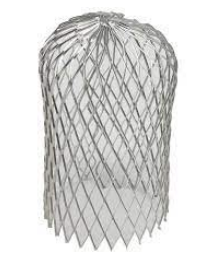
Gutter Improvements and Repairs
Trim all trees back 6 feet or more from the home. Prune trees overhanging the roofline.
Home improvement stores sell these downspout screens (like the one shown here), which help keep the
downspout from becoming clogged.
Many newly constructed homes have a long downspout extension . . .
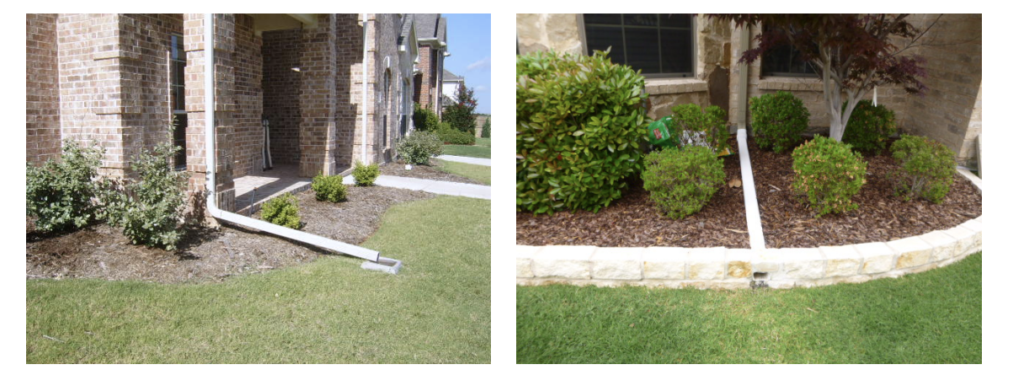
or attach the downspout to an underground drain pipe that releases the water at least 5 feet from the home. Like all gutter systems, the gutter and drain pipe should be examined annually and cleaned, as needed.
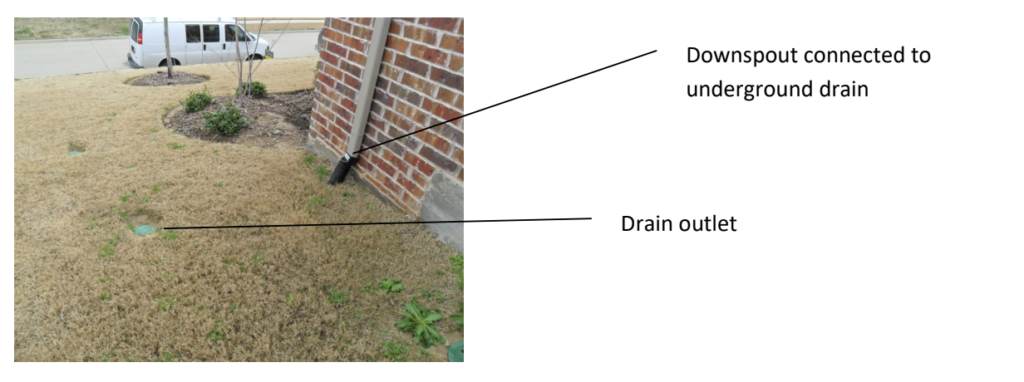
Gutters that are missing elbows and splash blocks should be repaired.
Almost all homes in our area have 5 inch gutters with a 2×3 inch downspout placed about every thirty feet. These gutters are not capable of managing the water runoff from the roof during heavy showers. Six inch gutters with the 3×4 inch downspouts are available and are a better choice for our area.
Here are some gutter improvement recommendations:
- Add additional downspouts to the 5 inch gutters where water is overflowing between the downspouts.
- Replace the existing downspouts with the larger 3×4 inch downspouts to increase gutter drainage x2.
- Your intuition may lead you to replace the entire gutter system with the larger 6 inch.
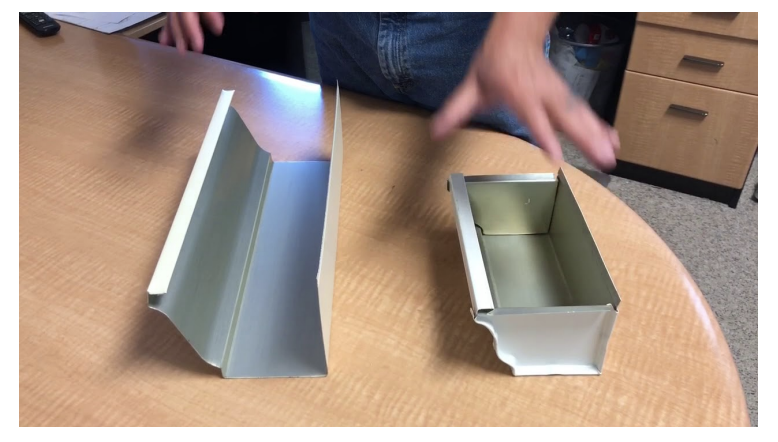
Leader Heads (see image below) are a commercial product used to capture and handle more water runoff in a limited space. This design may be suitable where there is a steep roof pitch and a large surface area that is channeled toward one small gutter (like the example shown below, which would benefit from a Leader
Head).
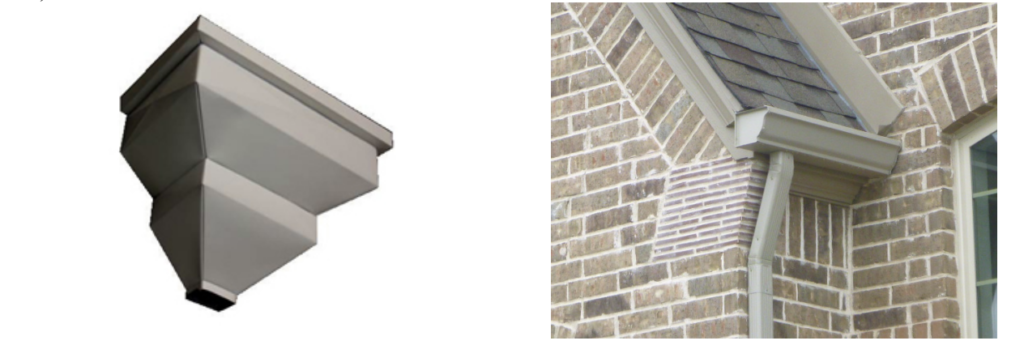
Damage caused by clogged or overflowing gutters may include:
Water getting in underneath the roof decking and the eave. Continued water penetration can lead to rot of the roof deck, eave and the fascia boards.
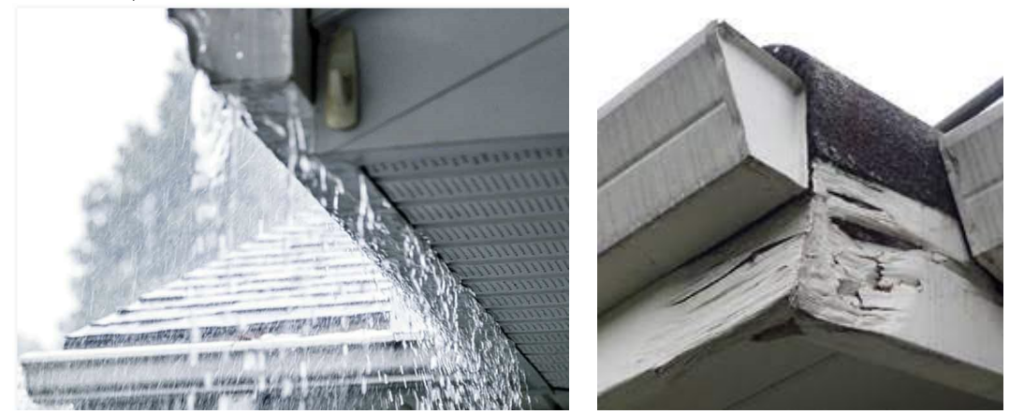
Gutters that overflow to a planter or patio will splash up onto vertical surfaces such as wood trim, wood siding, Masonite siding, and patio doors, which leads to moisture absorption and premature decay.
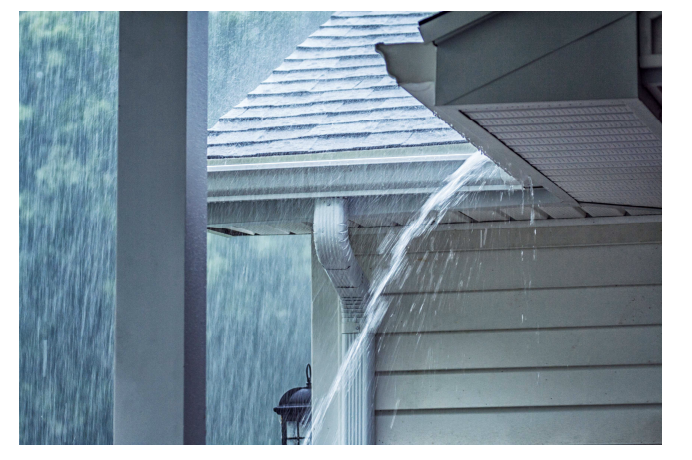
Downspouts that are not extended out from the edge of the home, such as the planter beds and corners of the home, concentrate excess moisture in these areas. This leads to uneven water distribution around the home thereby causing the clay soil to expand from saturation and may ultimately impact the foundation in the
future.
Missing splash blocks from downspouts on sloping grade levels can lead to erosion of the soil and retard ground cover growth, which helps stabilize the slope.
No Gutters –
Missing gutters from a two story roof edge can lead to the following conditions in five years or sooner:
- A trough and/or a lack of ground cover beneath the eave.
- Erosion, and/or soil settlement exposing the rough footing surfaces along the foundation.
- Soil settlement and sprinkler heads that stand two inches or more above the lawn.
A roof valley channels considerable water to spill to the ground below leaving a depression in the earth, which traps moisture against the home. Excess moisture and heaving clay soil causes extra pressure on the foundation, lifting the foundation, and may cause interior/exterior wall cracks or worse!
A lack of gutters over a garage door entry, entry cover or porch, or exterior doorways makes it difficult to stay dry while entering and exiting the home. (Consider installing a L-Metal flashing diverter like the one described and shown below)
Missing gutters above sliding glass door areas can allow the water to splash up from the patio or grade level against the door and threshold. When this occurs, it may not be long before you notice water absorbing into the flooring and/or into the walls causing finish damage or even mold growth.
Not every home warrants having gutters all the way around.
When you have a lot of overhanging trees or a neighbor who has a yard of tall trees, gutters can fill up quickly and become an ongoing source of labor intensive maintenance or expense. Here is an L-Metal flashing diverter that works great to direct water runoff to the planters below. Note: This planter has cement
splash blocks and rocks to handle the stream of water that comes off of the roof.
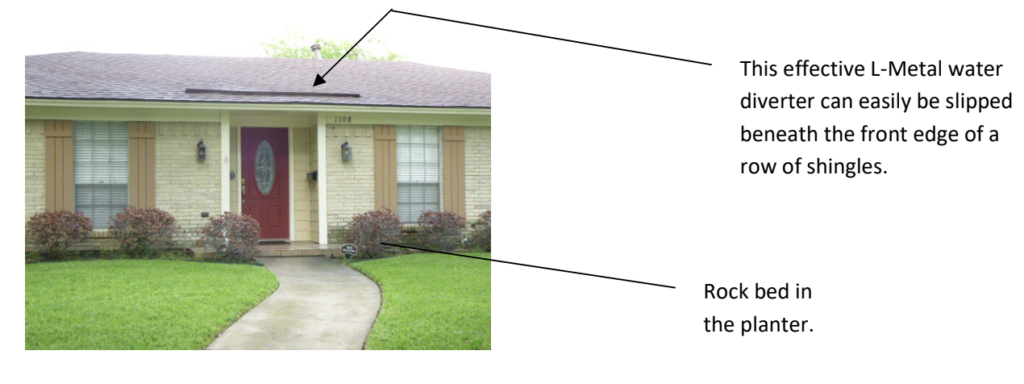
Gutter Screens – the Good & the Bad
Some homeowners install leaf guards as part of their gutter maintenance. Unskilled installers can not only damage shingles along the roof edge but not get the screen system installed securely. Screens that are porous and keep leaves out will allow debris, roof granules, dirt pass through the screen and accumulate in the gutter. There are screens that do an excellent job of keeping the gutters free of leaves for but, eventually, fine debris like silt will clog the gutters. Therefore, even with the screens, there will need to be periodic gutter maintenance.
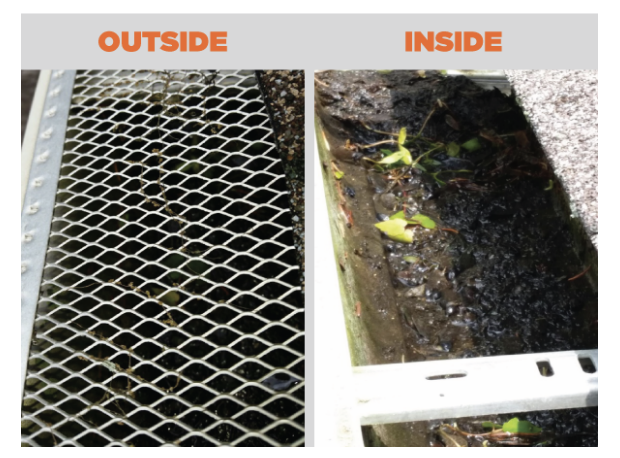
For gutter maintenance there are more expensive screen products that are a combination of screen and mesh that will do a much better job of keeping the debris out. However, eventually, you will still need to clean this as well and it’s quite difficult working around these gutter screen.




